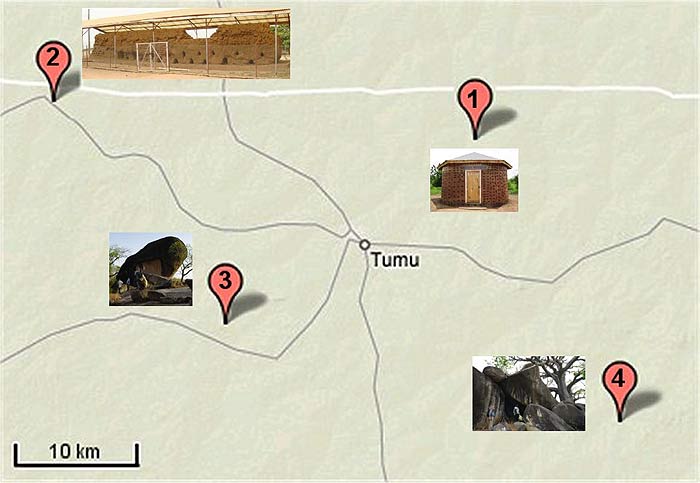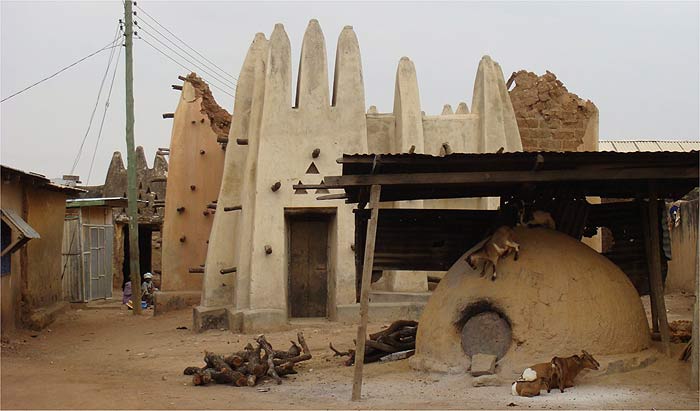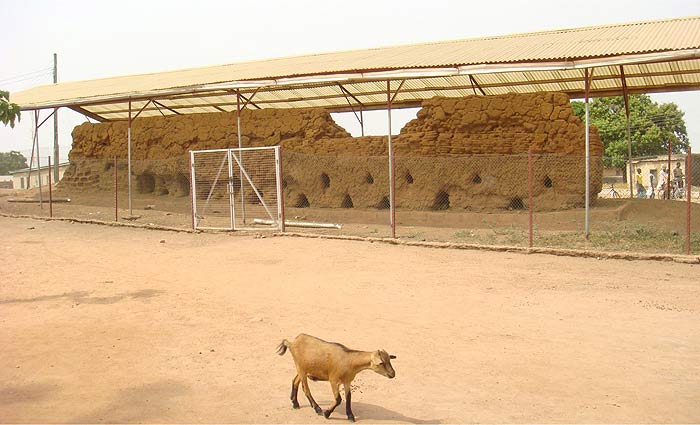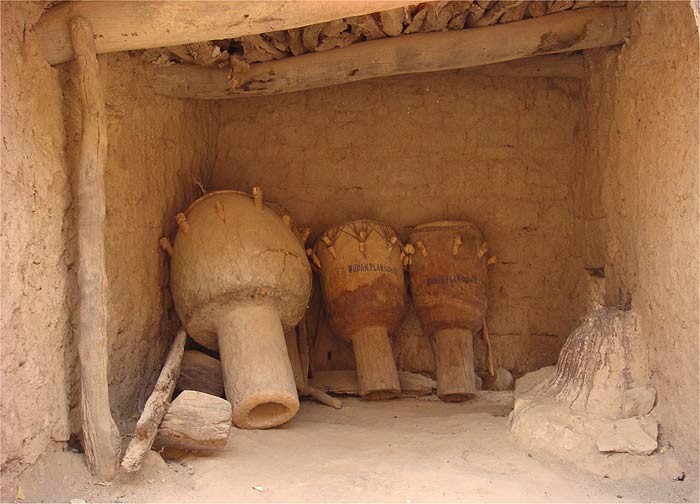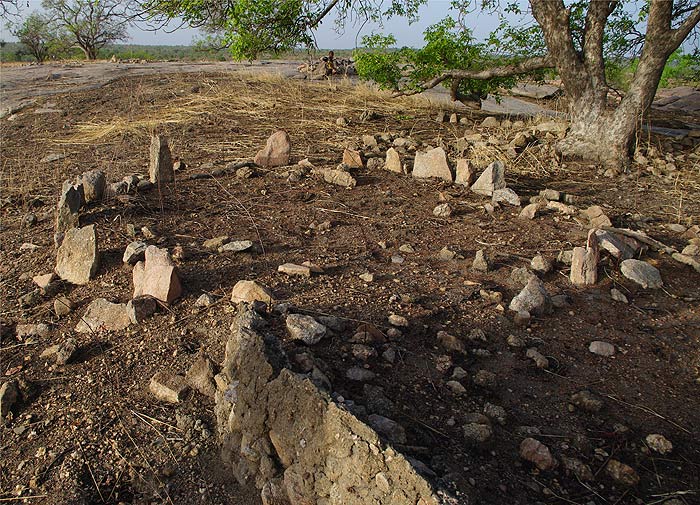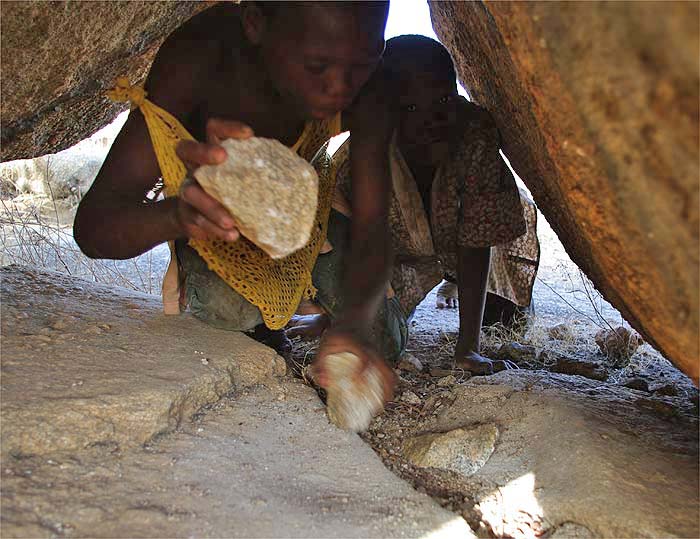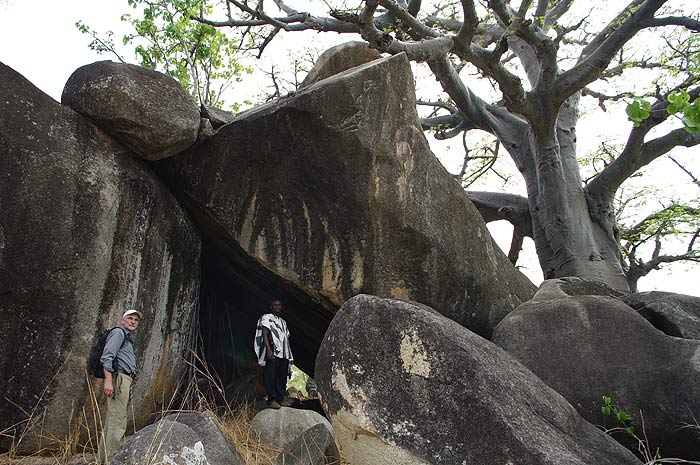Sites of Interest in the Region
Map of the best known sites around Tumu. 1 – Kasana, 2 - Gwollu, 3 – Wotomu, 4 – Dolibizan. The area between Wa, Tumu and Bolgatanga offers a number of as of yet unexplored tourist attractions. A good starting point is Bolgatanga’s regional museum, also hosting an artisan market. Sudanic-style timber and clay mosques are an exciting cultural ingredient even in smaller townships, many though in a ruined state, since modern preferences have a different taste. Some villages are a spectacular view with painted house walls and complex architecture, rapidly decaying. So snap good pictures and note the stories, one day they will be a valuable source of information of the vanished past.
The area around Wa holds a number West Sudanic style mosques and buildings. In the immediate vicinity of Tumu, apart from Kasana, fascinating experiences are easy to find. As nearly everywhere, they require some negotiations and endurance, however. Tourist tracks are not developed, and sometimes your payment for a guided tour is a living cock (get it for 5 GHC in Tumu), but it is all worth it. Once again, we advice you to contact “Destiny Communication Shop” for the most updated information. The Gwollu/Gwollo Defence Wall is the most easily accessible site. The local chief’s palace is expecting tourists with anticipation and will demand a fee for every snap you take. But a few cedis can buy you peace to walk around, see the remains of the defensive walls, shrines, community drums, and truly huge baobab trees - testimonies of an ancient habitation.
Recently, one better preserved part of the wall in Gwollu has been enclosed and roofed. This portion is about 30 m long and runs W–E.
A shelter for drums and an offering place in Gwollu, opposite the wall. Wotomu/Wotumu village is yet another reflection of defensive measures undertaken to survive the slave raiders. This natural rocky wander has hosted many families in stone-built structures and natural cavities. Local boys know the specific echoing points on the rocky surfaces for creating the most incredible stone music! The date of this site, enjoying also refreshing winds and tranquillity, is unknown. Local stories suggest a history of several hundred years. It is certain that the peak of settling was during the second half of the 19th century, in a shadow of organized slave raiding. Wotomu is the name of a legendary warrior.
Stone foundations of an ancient structure on top of Wotomu Hills.
Depression in the stone shows that this spot has been played as stone music for many years. Local boys are true virtuosos. The most daring visitors looking for an extreme testing of one’s stamina can attempt a visit to Dolibizan or Dolbizan village and get guides for a breath-taking trip to the Yalingbong stronghold. This trip will require the whole day, first driving a bumpy road, then walking some kilometres. Once there, you will understand why this spot was chosen to survive slave-hunting expeditions. Yalingbong means ‘the war rock’ in the local language and refers to the warring state between the local Sisales and the slave raiding Zabarimas. There is some evidence that this place has the longest occupational history so far acknowledged in the region.
The rough landscape of the Yalingbong stronghold at Dolibizan: mysterious and attractive.
|
||
